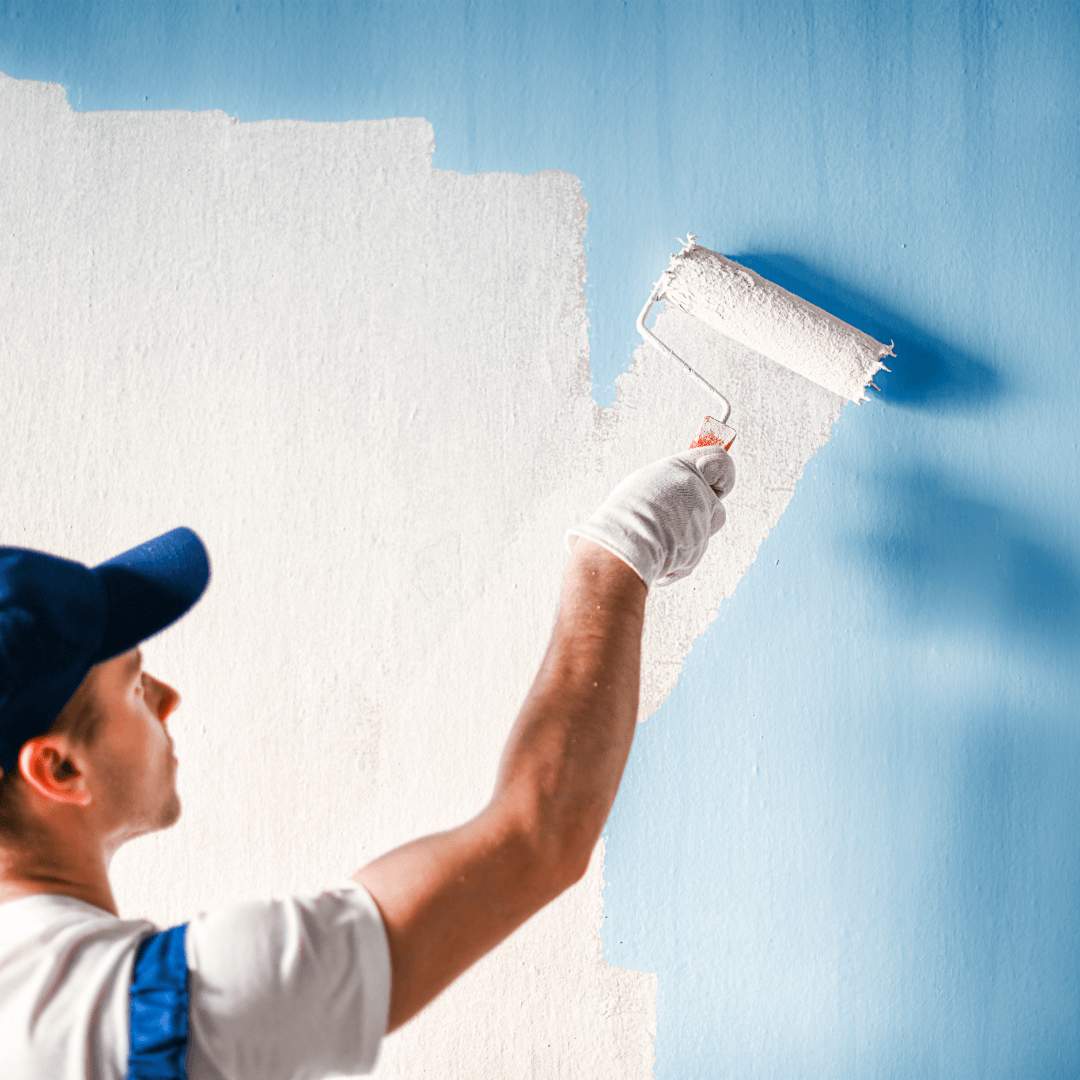What Do Most Painters Charge Hourly?

When it’s time to refresh the look of your home or business with a fresh coat of paint, one of the first questions that likely comes to mind is, “How much will it cost?” For many property owners, understanding the cost of hiring a professional painter hourly rates, especially on an hourly basis, can feel overwhelming. With estimates ranging widely, you might wonder what factors influence these costs and how to ensure you’re getting a fair price for quality work.
In this blog, we’ll break down the typical hourly rates that professional painters charge and the key factors that can affect those rates. Whether you’re planning a simple interior touch-up or a full-scale exterior repaint, understanding these details will help you budget appropriately and make informed decisions when hiring a painter.
By the end of this post, you’ll have a clearer picture of what to expect when hiring a painter, how to evaluate the right pricing for your project, and what questions to ask to ensure you’re getting the best value for your investment. Let’s dive in and explore what most painters charge hourly!
Breaking Down Painter Hourly Rates
Average Hourly Rates for Painters
When you’re looking to hire a professional painter, it’s essential to understand that hourly rates can vary significantly. On average, painters in the United States charge anywhere between $20 to $60 per hour. However, this range isn’t set in stone. Several variables can influence where a painter’s rate falls within this spectrum.
For example, a less experienced painter might charge lower rates, closer to the $20 per hour mark, while highly skilled or specialized painters can charge as much as $60 or more. Additionally, commercial painters working on larger projects often command higher rates than residential painters due to the complexity and scale of the work.
It’s also worth noting that some painters may charge a flat rate per project rather than an hourly fee, particularly for smaller or more straightforward jobs. However, understanding the general hourly rate provides a foundation that helps you evaluate quotes and compare services more effectively.
Factors That Influence Painter Hourly Rates
The wide range of painter hourly rates often boils down to several key factors. Understanding these will give you a clearer idea of why a particular painter may quote a higher or lower rate and help you assess if the price is fair for the scope of work you need.
1. Experience and Skill Level
As with most professions, a painter’s experience plays a significant role in their pricing. Newer painters or those just starting may offer lower rates in exchange for building their portfolio. On the other hand, painters with decades of experience, specialized skills (such as faux finishes or intricate detailing), or professional certifications will likely charge more.
Hiring a more experienced painter often means getting the job done faster and with higher quality, which can sometimes save you money in the long run despite the higher hourly rate.
2. Type of Project
Not all painting projects are created equal. The type of painting job you need can heavily influence the cost. For example:
- Interior vs. Exterior: Exterior painting typically requires more prep work, special equipment like ladders or scaffolding, and additional materials like weather-resistant paint. This can increase the hourly rate.
- Detailed Work: Projects that require precision, such as painting intricate trim, crown molding, or textured walls, can also lead to higher rates due to the extra skill and time involved.
The complexity of the project will often determine how much time a painter needs to complete the job, which directly impacts the overall cost.
3. Geographic Location
Where you live can also have a significant impact on what painters charge per hour. In areas with a higher cost of living, such as major cities or affluent neighborhoods, painter rates tend to be on the higher end of the spectrum. Conversely, in rural or less populated areas, rates are often lower.
For example, a painter in a large metropolitan area like New York City or San Francisco will likely charge more than a painter working in a small town. Local demand, labor costs, and even the cost of supplies can all vary by region, affecting the final price.
4. Materials and Supplies
Some painters include the cost of materials—such as primer, paint, brushes, rollers, and drop cloths—in their hourly rate, while others may charge separately for these items. The quality of the materials can also affect the overall cost. Higher-end paints and finishes will increase the total price, but they may also offer better durability and a more polished look.
When comparing quotes, it’s crucial to ask what’s included in the painter’s rate. If you’re being quoted a lower hourly rate but are expected to supply the materials yourself, you might end up paying more overall than with a painter who charges a higher rate but includes everything in the price.
Additional Costs and Considerations
Beyond the base hourly rate, other costs might come into play when hiring a painter. Being aware of these can help you avoid surprises when the final bill arrives.
1. Prep Work
One of the most time-consuming aspects of painting is preparation. Before painters can start applying fresh coats of paint, they often need to do a variety of prep tasks, such as:
- Filling holes or cracks in walls
- Sanding rough surfaces
- Removing old paint or wallpaper
- Priming the surface for a smooth finish
Since prep work can take up a large portion of the total time spent on a project, be sure to ask your painter if their hourly rate includes prep work or if it’s considered an additional cost.
2. Travel and Setup Time
If the painter has to travel a significant distance to reach your property, they may also charge for their travel time or fuel costs, particularly for jobs that are out of their usual service area. Additionally, the time spent setting up equipment, moving furniture, or protecting surfaces with drop cloths can add to the total cost.
3. Size and Scale of the Project
Finally, the overall size of your project can affect the painter’s hourly rate. While smaller jobs may have a set minimum charge, larger projects might qualify for bulk pricing or a reduced hourly rate. Many painters offer discounts for larger, multi-room projects or ongoing commercial contracts, so be sure to discuss this during your initial consultation.
How to Get Accurate Estimates
When it comes to hiring a painter, getting an accurate estimate is key to ensuring you stay within your budget and avoid unexpected costs. Here’s how to do it:
1. Request Multiple Quotes
It’s always a good idea to get quotes from at least three different painters. This will give you a sense of the going rate in your area and help you determine if a particular quote is too high or too low. Keep in mind that the cheapest option isn’t always the best—quality matters.
2. Inquire About What’s Included
Before settling on a painter, ask for a breakdown of what their rate includes. Does it cover materials, prep work, and cleanup? Are there any additional fees for travel or special equipment? Clarifying these details upfront will help you avoid hidden costs later on.
3. Check Reviews and References
Beyond pricing, it’s essential to verify the painter’s reputation. Look for online reviews, ask for references, or check out completed projects to ensure the painter delivers quality work. A lower price might not be worth it if the finished result doesn’t meet your expectations.
SUMMARY
Hiring a professional painter is an investment in your home or business, and understanding how painters charge—whether by the hour or by project—can help you make informed decisions that align with your budget. As we’ve covered, the average hourly rate for painters typically falls between $20 and $60 per hour, though this can vary based on factors such as experience, the type of project, geographic location, and whether materials are included.
To recap, key factors that influence painter hourly rates include:
- Experience and Skill Level: Seasoned painters naturally command higher rates.
- Type of Project: Complex or exterior jobs cost more due to the extra time and materials required.
- Geographic Location: Urban areas tend to have higher rates than rural regions.
- Additional Costs: Surface prep, travel, and the quality of materials can all affect the final price.
By keeping these factors in mind and requesting detailed estimates, you can ensure you’re getting the best value for your money without sacrificing quality.
At Solutions Painting, we believe in providing transparent pricing and delivering exceptional results, no matter the size or scope of your project. Whether you’re looking to refresh an interior space or give your home’s exterior a fresh, new look, our team of experienced professionals is here to help.
Ready to transform your space with a fresh coat of paint? Contact us today at Solutions Painting for a free, no-obligation quote. Our team will walk you through the process, provide a clear breakdown of costs, and ensure your project is completed to the highest standards. Don’t wait—let’s get started on making your vision a reality!
